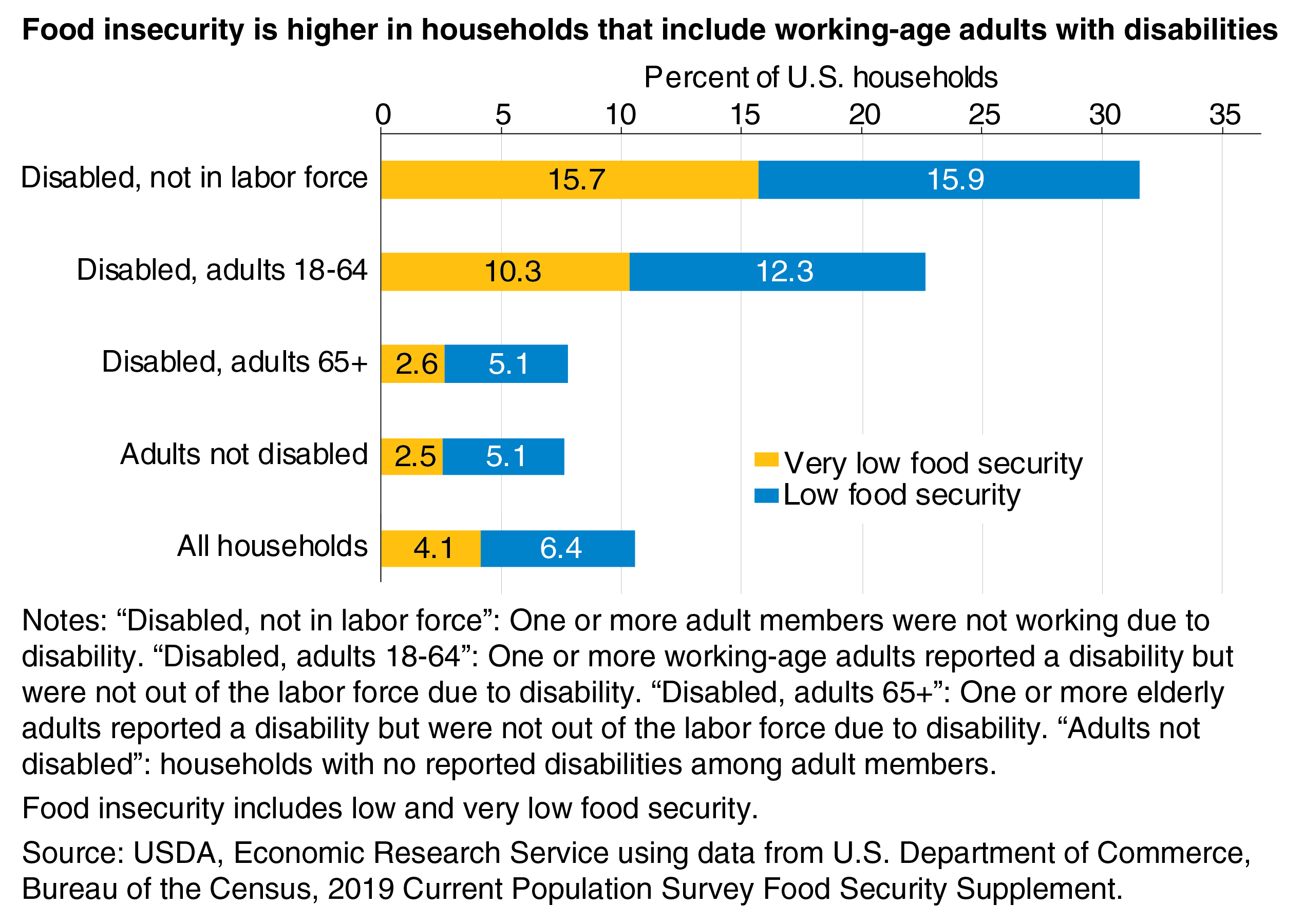Thirty Years After Enactment of the Americans with Disabilities Act, Disabilities Remain a Risk Factor for Food Insecurity
- by Alisha Coleman-Jensen
- 12/7/2020
The Americans with Disabilities Act, signed into law in July 1990, was intended to provide equal opportunities to thrive for those with and without disabilities. But for some people with disabilities, barriers still exist to being able to afford adequate food. Results from several USDA, Economic Research Service studies reveal that adults with disabilities face a higher risk of household food insecurity than do adults without disabilities.
Employment appears to play a role in this increased risk. Adults who report being unable to work because of disability have a high prevalence of food insecurity—struggling to put enough food on the table for all their household members. But employment alone does not explain the relationship between disabilities and food insecurity: Adults who have a disability, but do not report being unable to work because of the disability, also have a higher rate of food insecurity. Other factors may contribute to the increased prevalence, such as mobility or cognitive limitations that make it hard to acquire food or access food assistance programs. Higher health care costs and expenses for adaptive equipment or services could also reduce funds available for purchasing food.
In 2019, 10.5 percent of all U.S. households were food insecure. Among U.S. households with an adult out of the labor force because of disability, 31.6 percent were food insecure. Among U.S. households that included an adult who reported a disability but was not out of the labor force because of disability, 22.6 percent were food insecure. In contrast, 7.6 percent of households without adults with disabilities were food insecure in 2019. Food insecurity rates for households with adults age 65 and over who have a disability are similar to households that do not contain adults with disabilities, perhaps because these older adults with disabilities are less reliant on paid employment and instead receive Social Security benefits, pensions, or both.
In addition, food insecurity tends to be relatively severe for households that include adults with disabilities. In 2019, households with adults out of the labor force because of disabilities were almost four times as likely to experience very low food security compared with U.S. households as a whole (15.7 percent compared with 4.1 percent). Households with very low food security are experiencing the more severe range of food insecurity, in which the food intake of some household members was reduced, and normal eating patterns were disrupted at times during the year because of limited resources. Continued research to understand the mechanisms through which disabilities relate to food insecurity may point to ways to reduce barriers to food security among Americans with disabilities.
This article is drawn from:
- Food Security in the U.S. - Interactive Charts and Highlights. (n.d.). U.S. Department of Agriculture, Economic Research Service.
- Coleman-Jensen, A. & Nord, M. (2013). Food Insecurity Among Households With Working-Age Adults With Disabilities. U.S. Department of Agriculture, Economic Research Service. ERR-144.
You may also like:
- Coleman-Jensen, A. & Brucker, D.L. (2017, September 5). Adults With Disabilities, Especially Mental Health Disabilities, Are at a Higher Risk for Food Insecurity. Amber Waves, U.S. Department of Agriculture, Economic Research Service.
- Coleman-Jensen, A. (2020). “U.S. Food Insecurity and Population Trends with a Focus on Adults with Disabilities”. Physiology & Behavior. doi: 10.1016/j.physbeh.2020.112865.


